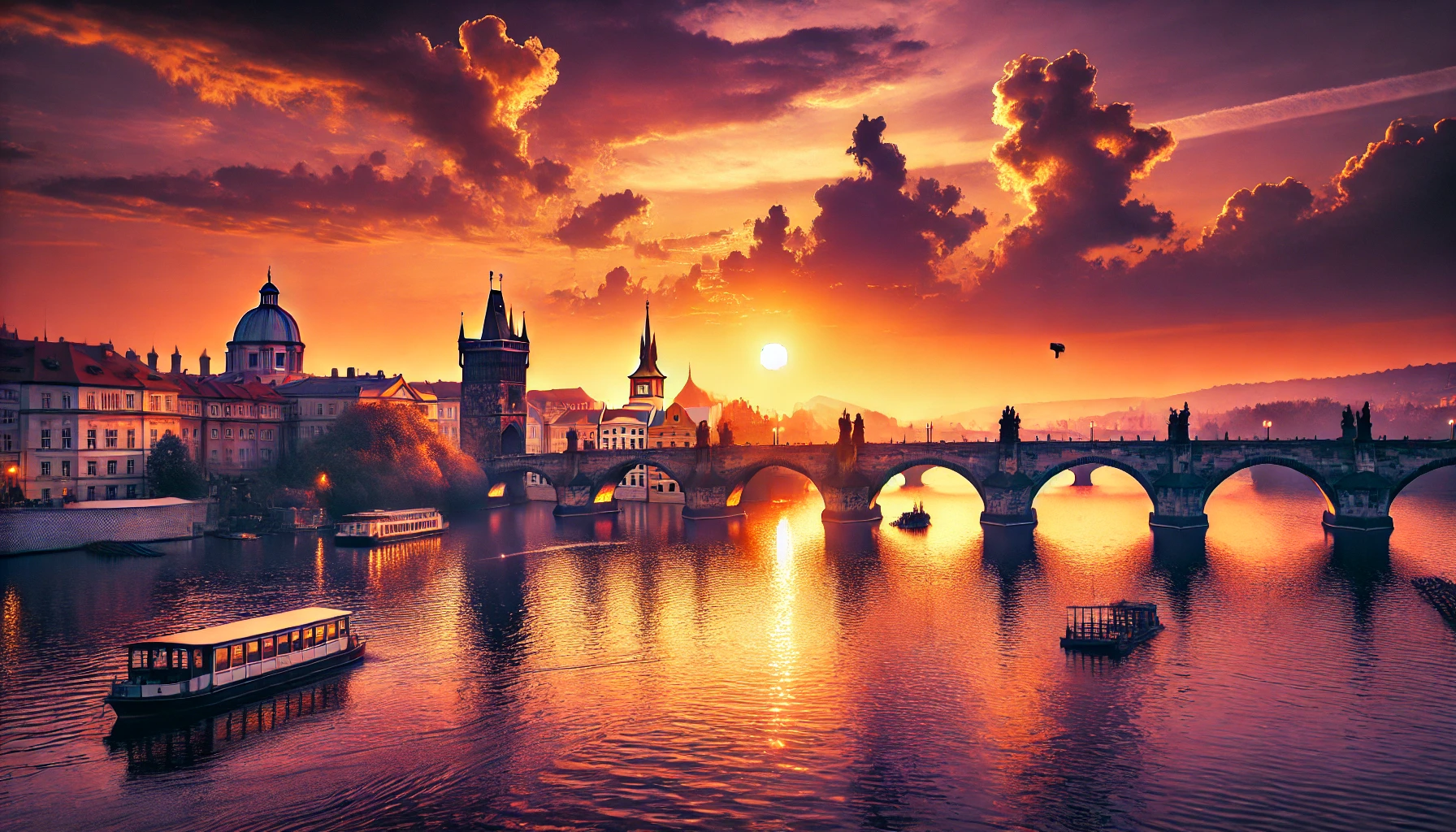
Prague, the heart of the Czech Republic, is a city that breathes history. Among its many architectural gems, the Charles Bridge stands out as a symbol of timeless beauty and medieval grandeur. Spanning the majestic Vltava River, the bridge connects the Old Town with the Lesser Quarter, and it remains one of Prague’s most iconic landmarks. Steeped in history, legends, and exquisite Gothic design, Charles Bridge is a must-visit for travelers seeking to experience the allure of a bygone era.
The Origins of Charles Bridge: A Masterpiece of Medieval Engineering
The story of Charles Bridge dates back to 1357, under the reign of King Charles IV, one of the most revered rulers of the Holy Roman Empire. The construction of the bridge was a strategic decision, designed to replace the Judith Bridge, which had been destroyed by a flood in 1342. At the time, Prague was a thriving center of commerce, and a new bridge was essential to connect the royal quarters to the city’s bustling marketplaces. King Charles IV, a man known for his grand visions and ambitious projects, laid the foundation stone of the bridge on July 9, 1357.
The bridge, originally known as the Stone Bridge, was constructed with precision and care. Peter Parler, the famous German architect who also designed the St. Vitus Cathedral, was appointed to oversee the bridge’s design. It took over 50 years to complete, but the result was a stunning piece of medieval architecture that withstood the tests of time. Built primarily from sandstone, the bridge is fortified with three Gothic-style towers, with two at the Lesser Quarter and one at the Old Town side.
The Gothic Beauty of Charles Bridge Statues
One of the most captivating features of Charles Bridge is its 30 baroque statues that line both sides of the structure. These statues were added much later, during the 17th and 18th centuries, and are a testament to the bridge’s cultural significance over the centuries. Each statue tells a story, many of them representing important saints and religious figures revered by the people of Prague.
Some of the most famous statues include St. John of Nepomuk, a Czech martyr who is often associated with the legend of the bridge. It is said that St. John was thrown from the bridge into the Vltava River by order of King Wenceslas IV after refusing to reveal the confessions of the queen. His statue is one of the oldest on the bridge, and it is believed that touching the statue brings good luck.
The statues contribute not only to the bridge’s religious significance but also to its artistic charm. As visitors walk along the cobbled pathway, they are greeted by a blend of Gothic architecture, baroque artistry, and legends from Prague’s past. The blend of styles and stories makes the bridge not just a route but a journey into the soul of Prague’s medieval history.
Legends and Superstitions Surrounding Charles Bridge
Like many historical structures, Charles Bridge is enveloped in myth and superstition. One of the most famous legends is tied to the date of its construction. King Charles IV, a deeply spiritual and superstitious ruler, consulted astrologers and numerologists when deciding the date and time for the bridge’s foundation. The king believed in the mystical power of numbers, and thus, the bridge’s construction began at precisely 5:31 AM on July 9, 1357. This specific time forms a palindrome (1357 9, 7 5:31) and was chosen for its perceived strength and good fortune.
Another intriguing myth associated with the bridge is that eggs were used in the mortar to strengthen the structure. According to legend, King Charles IV ordered villages around Prague to send eggs to be mixed into the mortar. One village reportedly misunderstood the request and sent boiled eggs, which, despite the confusion, became a famous anecdote connected to the bridge’s construction.
Beyond the numbers and egg-based mortar, the bridge is also a symbol of Prague’s spiritual heart. Many locals believe that the bridge holds protective powers, ensuring the city’s safety from natural disasters and foreign invasions. These legends, along with the bridge’s Gothic towers and statues, create an atmosphere of mystique that lingers as visitors stroll along its path.
Charles Bridge Today: A Cultural Hub in Prague
In the present day, Charles Bridge is much more than a historical monument. It has become a bustling center of activity, attracting millions of visitors each year. Street musicians, artists, and vendors line the bridge, adding a vibrant energy to this ancient structure. While the bridge’s primary function has shifted from trade and transportation to tourism, its cultural significance remains intact.
The sunrise over Charles Bridge is a sight to behold. As the first rays of light bathe the Gothic towers and statues in golden hues, visitors are treated to an unforgettable view of Prague Castle in the distance, perched high above the city. The view from the bridge also offers a stunning panorama of Prague’s red rooftops, spires, and the shimmering waters of the Vltava River. It’s no surprise that photographers from all over the world flock to Charles Bridge to capture its beauty.
In recent years, the bridge has undergone several renovations to preserve its structure and appearance. While modernity has crept into many parts of Prague, Charles Bridge has remained a link to the city’s past, a place where time seems to stand still. For locals and tourists alike, crossing Charles Bridge is a ritual, a passage between two eras: the medieval and the modern.
Conclusion: Why Charles Bridge Is a Must-Visit Destination in Prague
With its rich history, striking Gothic architecture, and vibrant atmosphere, Charles Bridge stands as a testament to Prague’s historical and cultural legacy. It is not just a crossing point over the Vltava River but a living monument to medieval engineering, a gallery of baroque artistry, and a hub of modern-day cultural life. Whether you’re a history buff, an art enthusiast, or simply a traveler seeking to experience the magic of Prague, Charles Bridge is an unmissable destination.
Walking across the bridge, with the sound of the river below and the towering statues watching over you, is an experience that transports you back in time. It is a journey through the history of Prague and an encounter with the legends and myths that have shaped the city. The bridge’s enduring beauty and significance ensure that it will remain a symbol of Prague for centuries to come.
If you ever find yourself in Prague, take the time to visit Charles Bridge, especially at dawn or dusk when the crowds have thinned, and the magic of the place truly comes alive.








